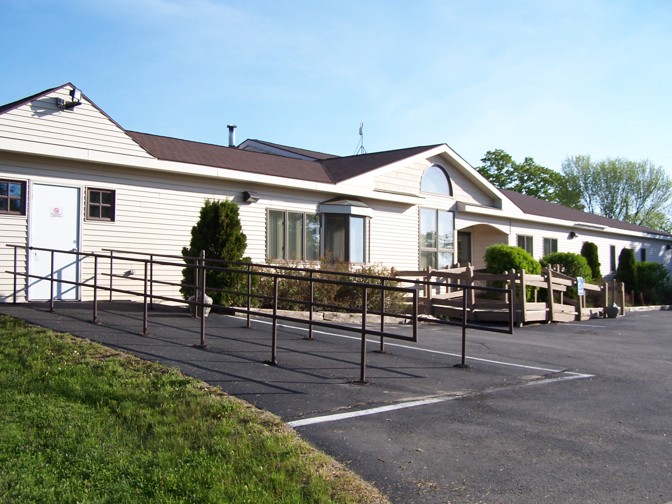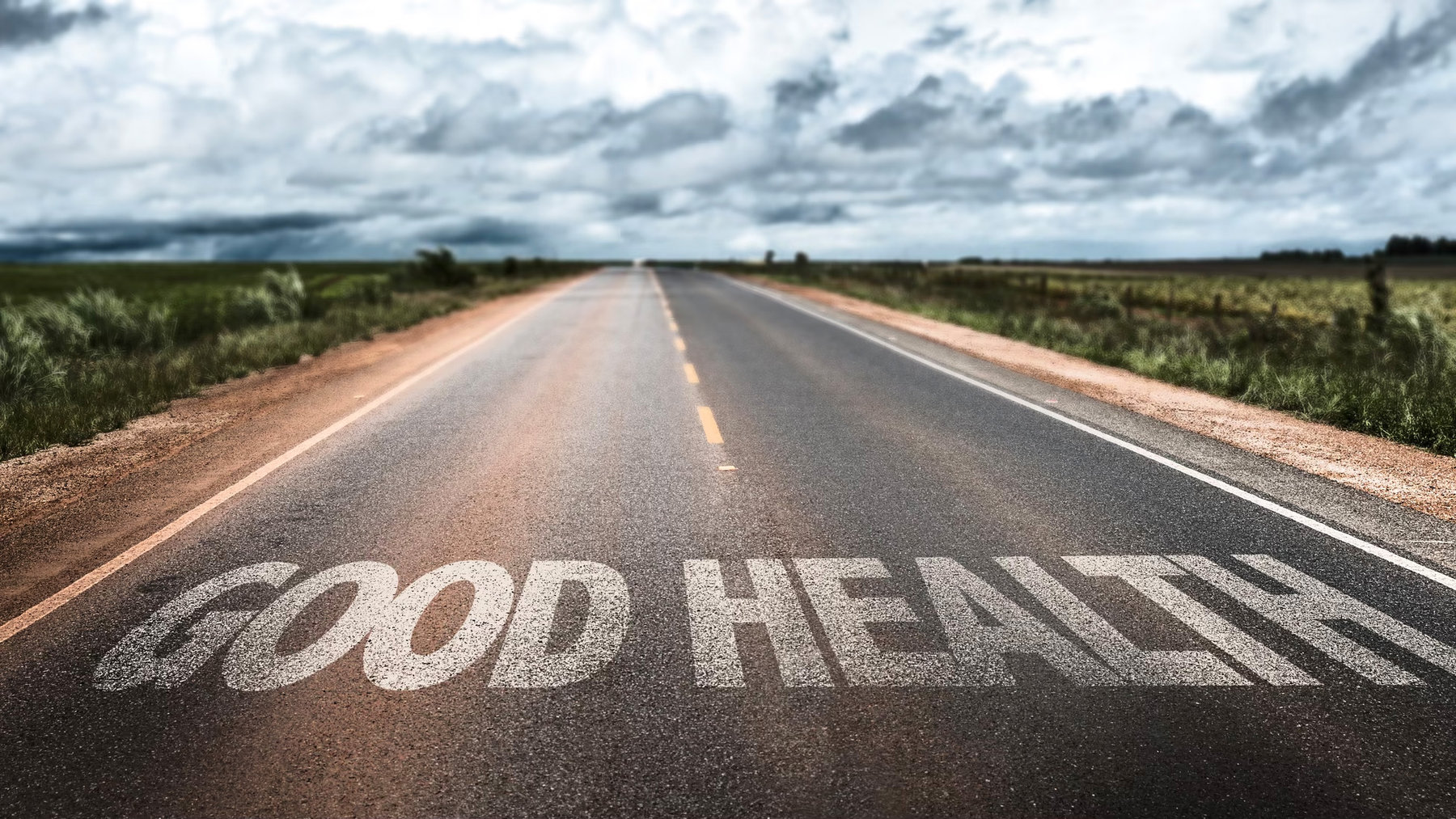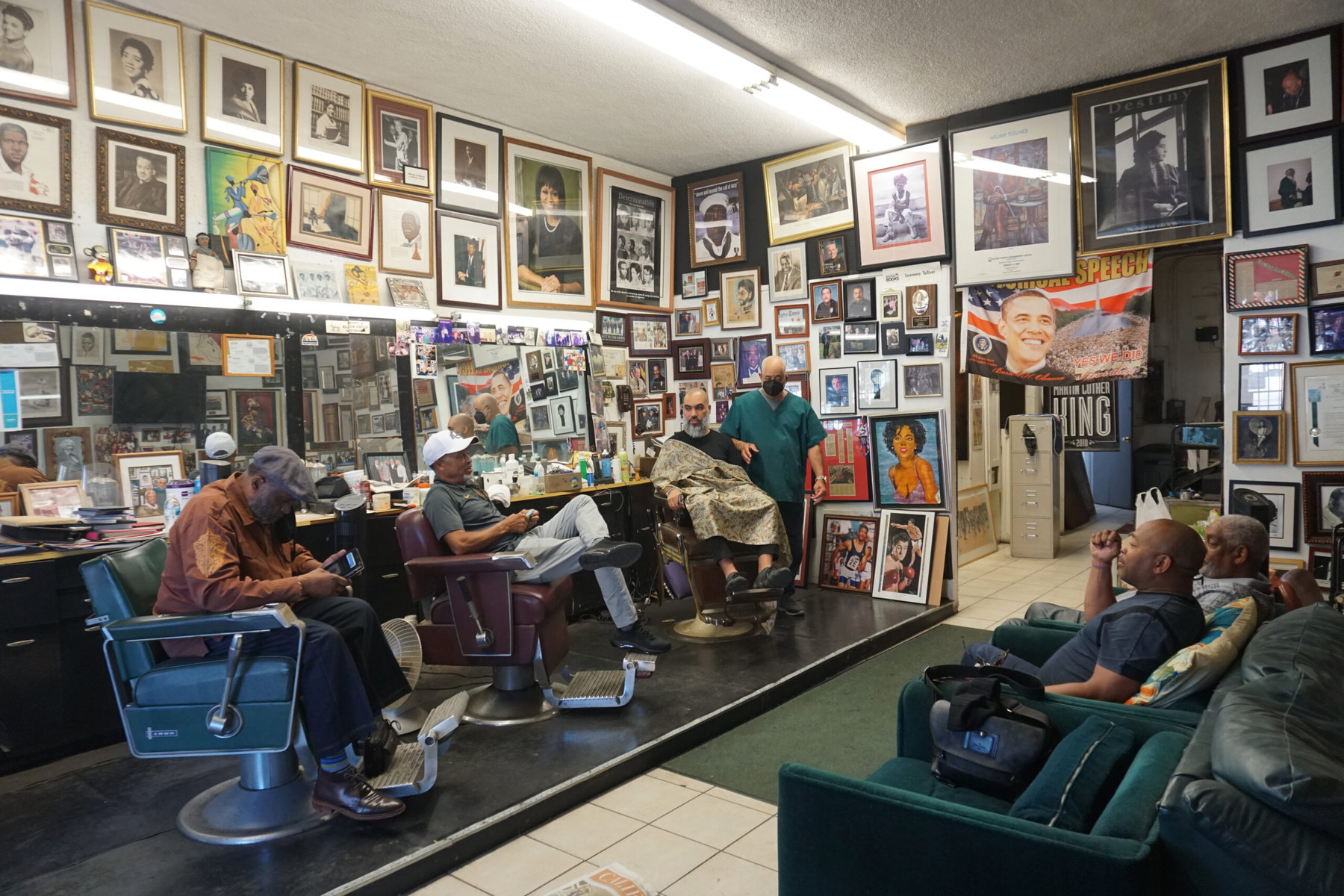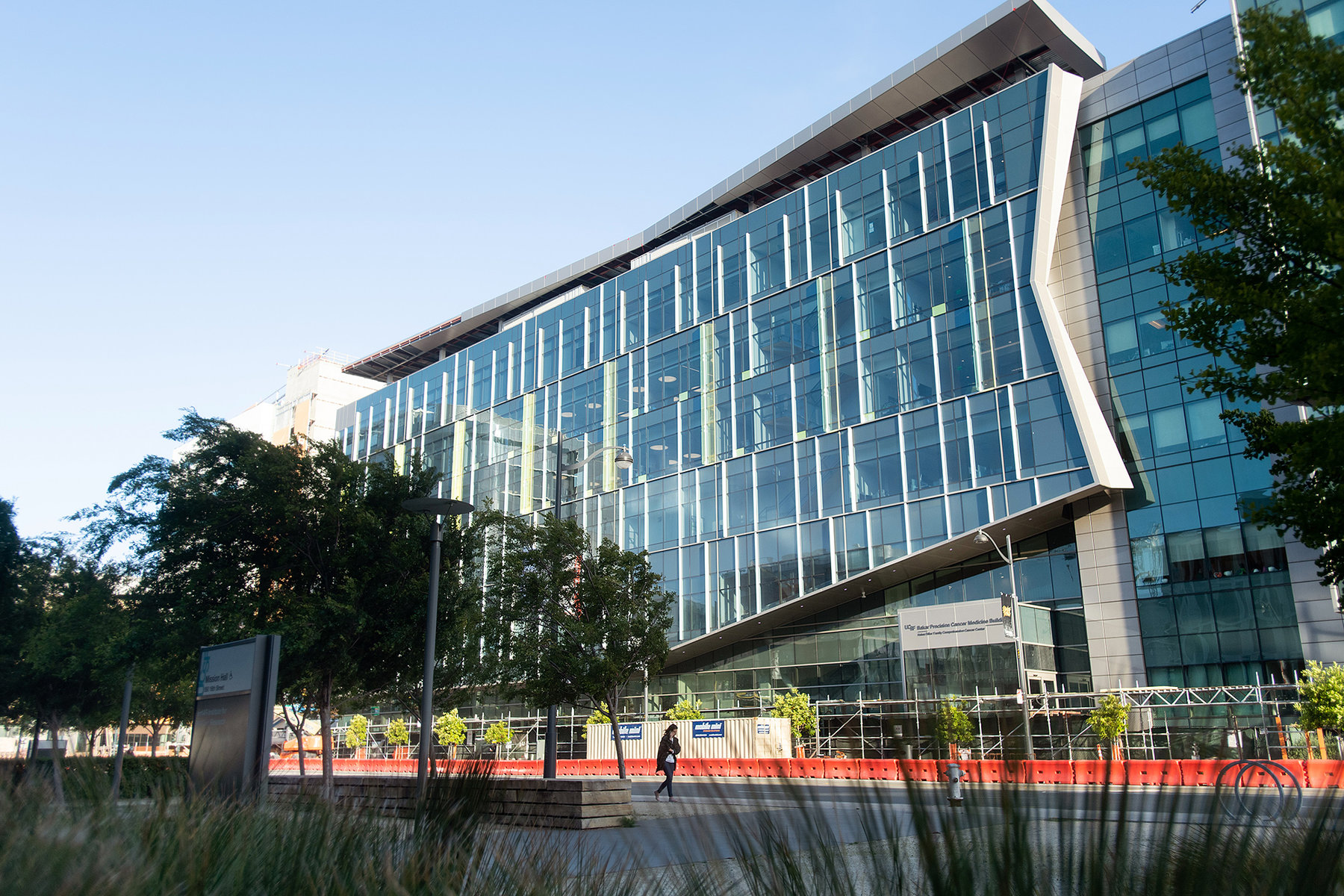Of the many challenges for America’s rural communities, near the top of the list is access to health care. Rural clinics and hospitals are closing across the nation. When they close, it’s hard for younger families, and older residents, to stay in town—and harder to attract new businesses, or attract replacements for the doctors, nurses, and other health-care workers who may be retiring from their practices or just leaving town.
Previously we’ve reported on the realities of smaller-town and rural health care in Brownsville, Texas, and Ajo, Arizona. This is a report from the smallest city we have visited in our travels, in spectacularly beautiful though remote far Down East Maine.
Today’s health care in Eastport, Maine, traces its roots back to Lyndon Johnson’s War on Poverty and the establishment of the Office of Economic Opportunity (OEO). In this, it is like a large number of other small communities across the country. Just as today’s libraries bear the century-old imprint of Andrew Carnegie, and many of today’s post offices and other public buildings are legacies of construction and mural-painting efforts launched during the Great Depression by Franklin D. Roosevelt, today’s remaining rural clinics are, in many cases, the effects of an initiative launched 50 years ago. Along with other OEO initiatives, such as Job Corps, VISTA, and Head Start, that remain to this day, this rural-health initiative has shaped the primary health care in poor or underserved areas long since it was started.
Back in the 1960s, enter a young medical doctor and civil-rights activist with a vision. This was H. Jack Geiger, who had spent time in South Africa during medical school and had seen the positive impact that the community health-care model had in the very poor area of Pholela. Later, back in the United States, he spent time in the Mississippi Delta for the Freedom Summer project of 1964 as field coordinator for the Medical Committee for Human Rights.
When he returned to Boston, Geiger connected his observations in South Africa and the Mississippi Delta. Along with a colleague, Count Gibson, Geiger proposed to the OEO to try out what he had learned by starting two experimental, community-based health-care programs, one in Boston’s Columbia Point housing project and the other in the Mississippi Delta. Eventually, these became models for the roughly 1,400 Federally Qualified Health Centers (FQHC) that serve more than 28 million people around the U.S. today.
During our travels for American Futures and Our Towns reporting, my husband, Jim, and I visited two examples of these community-based health centers: Desert Senita Community Health Center in Ajo, Arizona, and the Rowland B. French Medical Center in Eastport, Maine.
Their FQHC designation is a godsend for rural health-care centers. It ensures that the centers will receive, among other things, enhanced reimbursements for patients covered by Medicaid and Medicare, and will offer a sliding scale for those without any coverage. It promises federal malpractice-insurance coverage for providers, extra partnerships for the centers, and more specialist care. Each center is unique in its profile, depending on the community’s needs. For example, the Rowland B. French Medical Center has providers for behavioral health counseling, podiatry, radiology, nephrology, and social support. Desert Senita has a regularly visiting cardiologist and ophthalmologist, a certified Spanish translator, and a special phone line with third-party translators for multiple languages.
During my visit last month to the Eastport center, I noticed a language, spirit, and way of operating that reminded me, surprisingly, of what I had heard so frequently in public libraries around the country. As for libraries, when Andrew Carnegie donated funds to help build nearly 1,700 public libraries, he required that the towns he supported demonstrate a need for a library; that the towns invest some of their own funds in the present or future operations of the library; and that the library serve all the people. Today’s public libraries, Carnegie-built or not, reflect the mission of serving the public in this democratic way.
The community health centers, like Eastport’s, strike similar chords: The centers are built in underserved communities; they require majority local representation in their governing and decisions; and they are committed to serving everyone, regardless of ability to pay. Not precisely the same as Carnegie’s libraries, but eerily similar in terms of being locally driven and serving the needs of all residents in a democratic way. As Holly Gartmayer-DeYoung, the CEO of Eastport Health Care Inc., which includes the Rowland B. French Medical Center, put it to me, we are here to “understand and heartfully serve the community.”
Eastport Health Care (EHC) serves Washington County, Maine, in its three center locations in Eastport and the neighboring towns of Machias and Calais. What does the health profile of the region look like, and how does EHC answer to the region’s needs?
By most statistical measures, it looks bad. The health profile of Washington County, which includes Eastport, Machias, and Calais, is low even by Maine’s standards. Washington County ranks 15th of 16 counties in Maine in a composite measure of “Health Factors,” which is made up of health-related behaviors (such as tobacco, alcohol, and physical activity), access to care, socioeconomic factors (some 20 percent of Washington County residents live in poverty), and the physical environment (a subcategory in which beautiful, quiet, remote Washington County ranks No. 2).
Washington County ranks 16th of 16 in Maine for “Health Outcomes,” which includes measures of length of life and quality of life. (I would point out that quality-of-life measures don’t include personal safety: On our first night in Eastport, Jim and I locked ourselves out of our apartment. We hung out with the neighbors next door until someone could be found to hunt for a key. We learned our lesson: Never lock your door.)
With such a profile, where is EHC and its citizen board to start? Perhaps with the bad news. Here is a list in descending order that EHC decided were its major health needs to tackle: the opioid epidemic, diabetes, hypertension, obesity, food or heat insecurity (it’s cold in Maine), and mental health.

Now on to the good news. Here are some of EHC’s creative ideas for plans and solutions to their most pressing problems:
- What can we do to mitigate travel issues?
Washington County, with a population just shy of 32,000 residents, is twice the size of Rhode Island in square miles. That can translate into an hour’s drive to a clinic, or two or three hours to visit a specialist or for routine care for kids’ health, such as eye exams, glasses, the dentist, and orthodontia. Women in Eastport drive about 44 miles to Machias for prenatal services. For situations that require frequent, regular access to ongoing treatments, such as chemotherapy, the distances to travel can become simply untenable. When I expressed my chagrin at the idea of such distances, Gartmayer-DeYoung said with a this-is-Maine tone, “People get used to the drive.”
Without a miracle cure of close proximity to all care, one way the EHC eases the complex logistics of health care is with a “patient-navigator,” someone to manage the pieces: finding specialist help, arranging appointments, organizing transportation, managing overnight stays and last-mile transit, tracking and coordinating multiple issues, and helping identify and coordinate access to food, housing, utilities, etc. EHC has a full-time patient-navigator and has trained all staff to either help directly or be aware of all their patients’ needs.
- How can we help an aging population?
Eastport’s population has declined from 5,000 in its early-20th-century sardine-canning heyday to 1,331 in 2010, to 1,259 in 2018. There are a lot of retirees, and they are not necessarily wealthy. The median resident age is 54, compared with 45 in Maine overall (chronically among the oldest in the United States). At Shead High School in Eastport, the total student population when I visited in 2013 was 110; this year it is 94.
Some solutions are simple and inexpensive, and carry a punch. Focused on safety, Eastport has begun programs to install grab bars and smoke detectors in homes with elderly residents. It also brings caregivers into the equation with an ID bracelet to register them with police and EMS as go-to contacts to facilitate quick, effective, connected responses for the vulnerable individuals they serve.
In a double win to help the elderly get around and improve their overall well-being, Eastport has created plans to improve sidewalks, install street lighting and crosswalks, put safety rails along steep inclines, and place benches for people to stop and rest.
- How do we attract staff to the rural health centers?
Retention at Eastport Health Care is not a big issue. Of the currently fully staffed 52 employees at EHC, some 58 percent have been there for at least five years, 25 percent for 10 years.
But there are gaps. One of the two dentists moved west. The center would like a specialist in diabetes. Gartmayer-DeYoung worries about how to replace primary-care providers when they retire. Furthermore, she is concerned about finding her own replacement when she will soon retire for health reasons.
In remote areas, and with harsh climates, attracting new staff to replace or add to the roster can be challenging. Gartmayer-DeYoung believes that a successful solution must start with awareness of the strong local culture. Mainers are, well, famously Mainers. Straightforward, proud of their heritage, understated, no-nonsense, leaning on one another. Gartmayer-DeYoung says it would help to embed that cultural knowledge into the medical training for all those who are part of the region’s health ecology: students, doctors, pharmacists, dentists, et al.
EHC has placed a cultural-immersion component into local training programs, and two professionals have chosen to settle in Washington County so far because of it. A dozen more of the 50 participating graduate students stay connected with Eastport as they continue their training. The outlook for maintaining the culture of the clinic as well is long-term: “We have built a lot of trust. We see it as a stewardship,” says Gartmayer-DeYoung.
- How can we keep the young people around and offer them hope for careers?
Many people in Eastport and other towns around the country are worried about this issue. In a long-term bet, the EHC board has initiated scholarship programs. “This translates into hope,” says Gartmayer-DeYoung. Along with initiatives for boosting training in health-related fields, this could lead to strong future staffing in the health center, related fields, and a broader base for regional employment in general. Since 2008, EHC has supported 58 high-school students with more than $100,000 in scholarships and supported community-college students on health-care professional tracks, as well as staff seeking to advance their skill sets.
- Wellness:
We have visited Eastport several times over the past six years. As part of our habit to try to keep fit while traveling, I have gone in search of exercise options in Eastport each time. Success has been elusive: The closest swimming (my go-to exercise at YMCAs and public pools) is at least 30 minutes away in Calais. Water, water everywhere, but the water was 58 degrees in the Bay of Fundy this August. No gym. No track. No rental bikes to be found. This was a short-term challenge for me, but a long-term challenge for the residents of Eastport.
As for solutions, EHC has knocked on the door of the school to access its gym for walking, and hopes this option could become a catalyst for the community. Besides extending sidewalks for all walkers, EHC hopes to extend the trails from the old railroad lines for more ambitious walkers and bikers.
It has developed collaborations—for example, with the Cancer Support Center of Maine.
It has created Community Circles, groups to build citizens’-support networks, tackling topics such as hospice care, senior needs, integrated behavior health, LGBTQ needs, recovery support for addiction, teens helping teens, understanding Alzheimer’s disease, health and wellness, food insecurity, strategic planning, governance and leadership training, and more.
Summing up the state of play in Eastport’s health-care world today, Holly Gartmayer-DeYoung says, “We are hardy people. But sometimes overwhelmed.”




